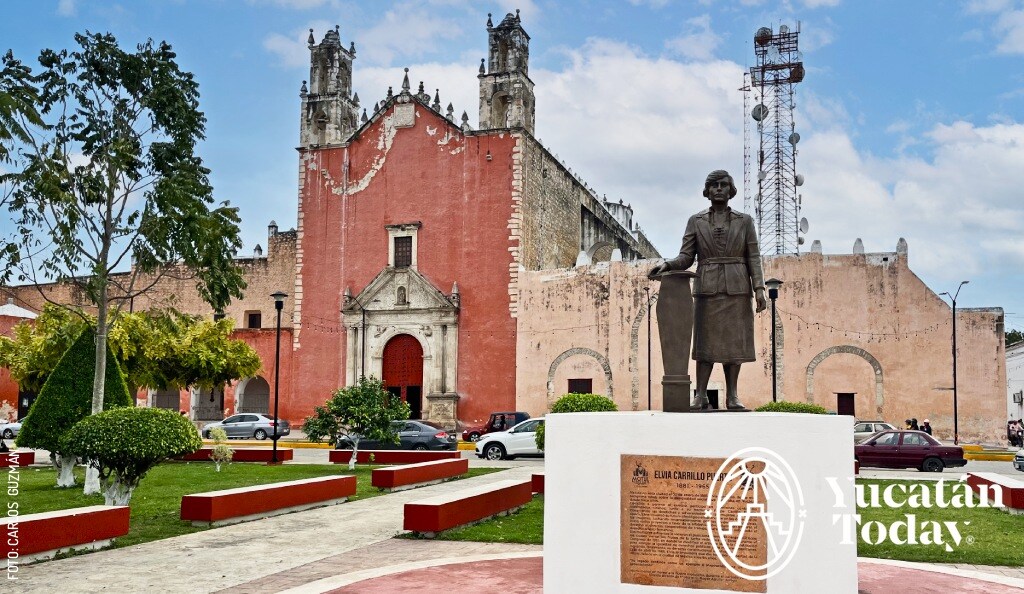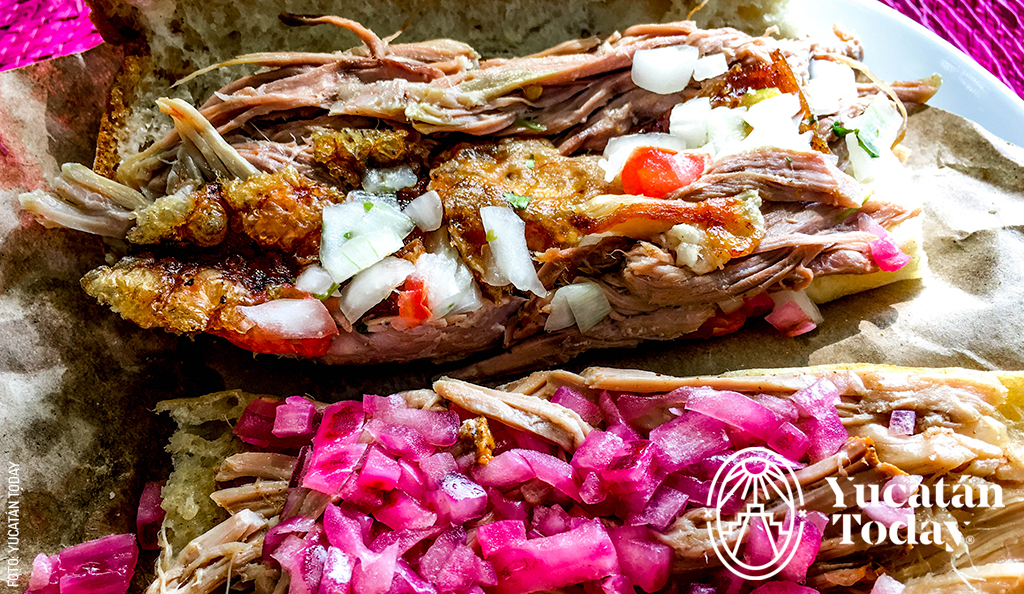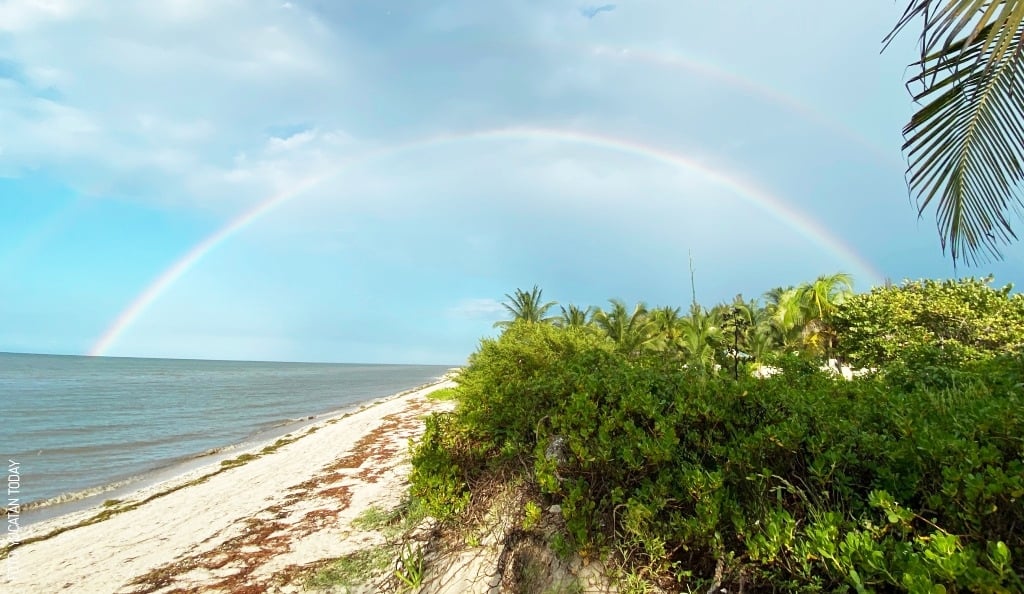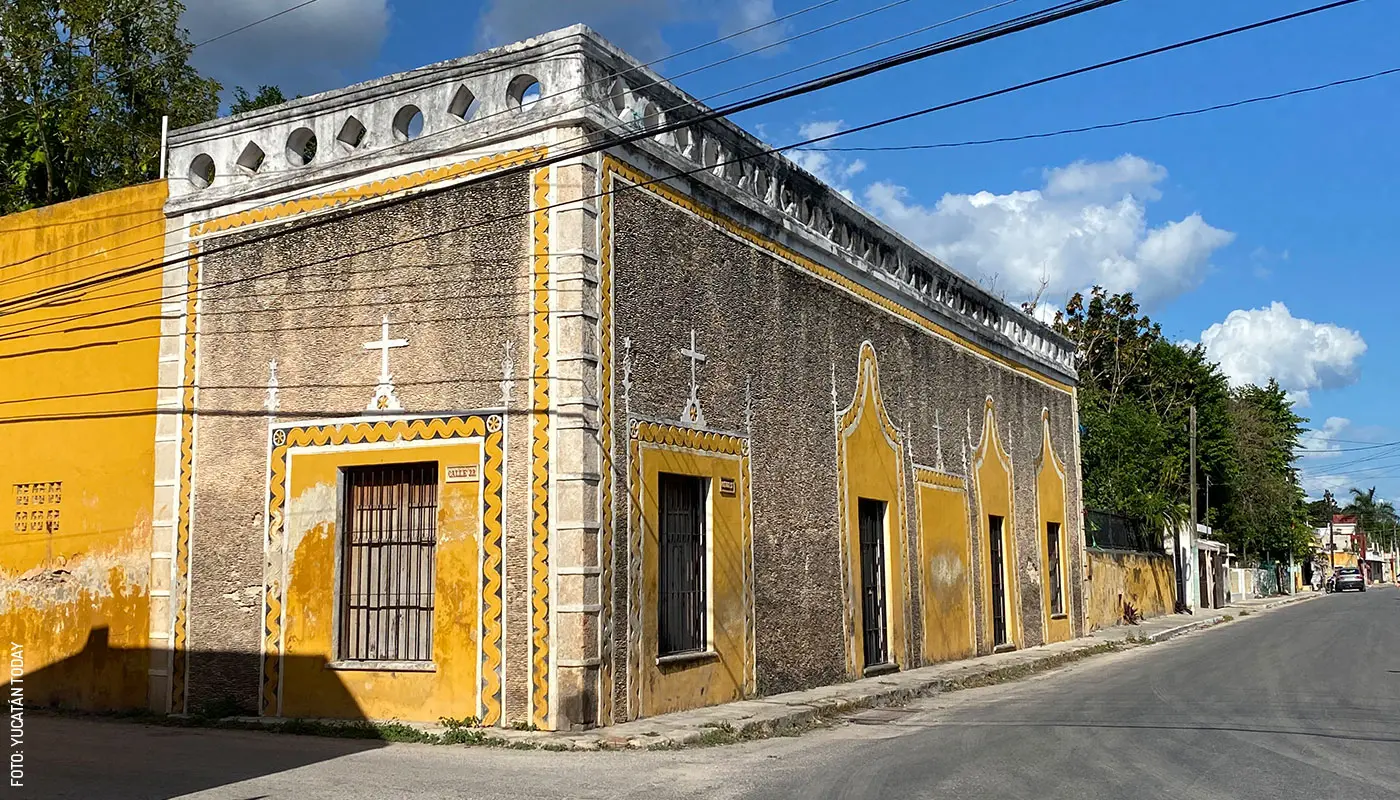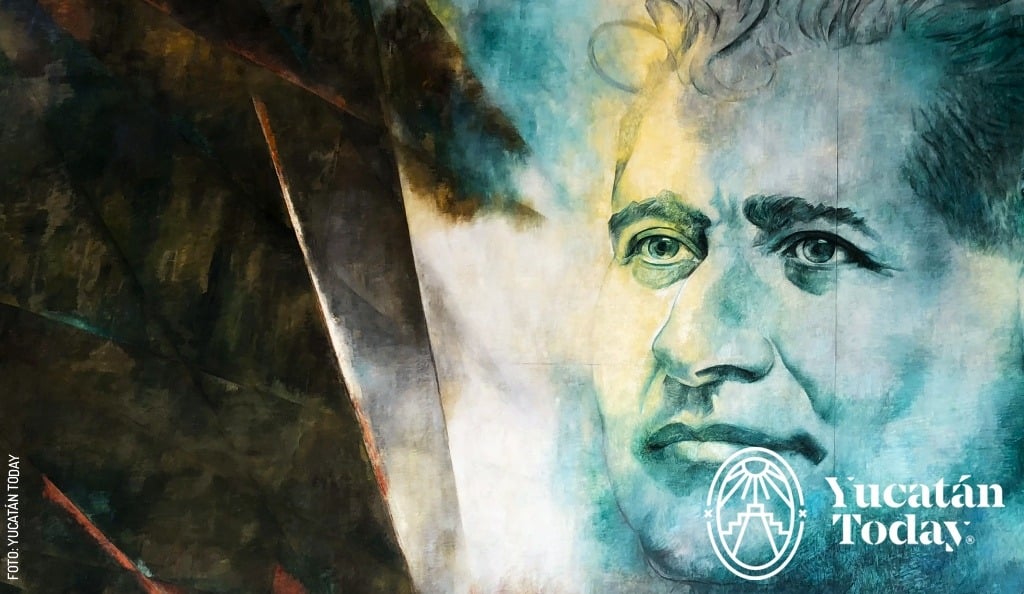Motul de Carrillo Puerto, located 40 minutes from Mérida on the conveniently named Mérida-Motul highway, stands out for being the birthplace of one of the most important figures in the state's history and for being the hometown of one of Yucatán’s most beloved recipes. Motul is a clear example of the historical and cultural richness that defines Yucatán. It’s precisely this notable heritage that earned Motul the official title of Magical Town in 2023. Want to know more about Motul? Join us on a tour through its most iconic sites and discover why it’s one of the essential destinations during your visit to the state.
A quick look at the history of Motul
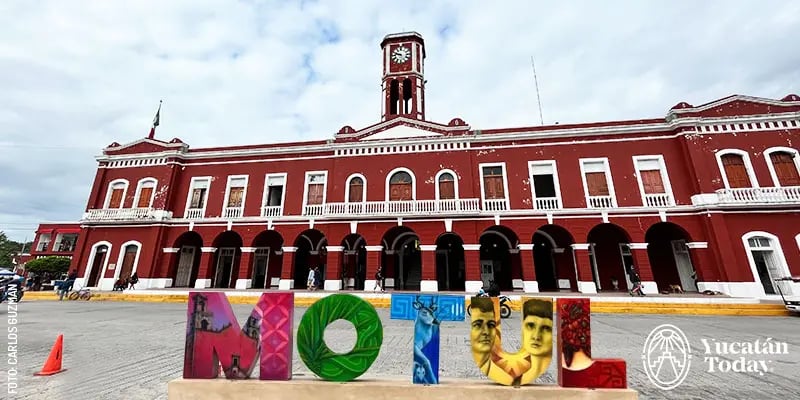
It is said that Motul’s origins date back to the arrival of a group of Maya people from Chichén Itzá, who decided to settle in the area. The leader of this group was named Zac Mutul, and because of this, in its early days, Motul was known as Mutul.
During the Spanish conquest, like in other regions of the state, the evangelization of the Maya people began. In Motul, the construction of the convent of San Juan Bautista (Saint John the Baptist) started in 1567, with the main purpose of converting the Maya of Motul and surrounding areas to Christianity. The construction of the now ex-convent was completed in 1588; later, in 1651, the construction of the church was finalized.
Motul’s location at the heart Yucatán’s henequen-producing region significantly shaped the course of its history and its demographics. The economic importance of henequen fiber production created a huge surge in labor demand, leading not only to the exploitation of workers, most of whom were Maya, but also to the “importation” of labor from countries like Korea and China. In addition to these immigrant communities, there was also a wave of Lebanese migration that began in 1892, driven in part by the persecution of Lebanese Christians by the Ottoman Empire.
With the outbreak of the Mexican Revolution in 1910, Motul began to emerge as one of the most important centers for socialist thought in Yucatán. Socialism sought justice for workers who, although technically “free,” were effectively enslaved by landowners and hacienda bosses. Among the key figures of this movement was the prominent Carrillo Puerto family from Motul, particularly the siblings Felipe and Elvia.
What to see and do in Motul
Church and former convent of San Juan Bautista
Today, you can visit this majestic temple, whose red façade, vast interiors, and remnants of original wall paintings will leave you in awe. Upon entering, you'll have the chance to see the figure of Motul’s patron saint, St. John the Baptist (San Juan Bautista), as well as the images of Don Bosco and Our Lady of Mount Carmel. The latter is especially beloved by the people of Motul, as each July, various local gremios (guilds) organize festivities in her honor, celebrating on their designated days.
Once you leave the ex-convent and take a look at the park and other buildings located in the main square, you’ll notice that they’re all painted in a distinctive colonial red with white cornice details. This striking color was chosen as a reference to Motul’s connections to the Mexican Revolution, an event closely linked to a very famous figure in the history of Yucatán and México in general.
Motul and the Carrillo Puerto family
By now, the combined last name of “Carrillo Puerto” probably sounds very familiar to you, and that’s no surprise. But whether you’ve heard those names before or not, the full magnitude of their bearers’ legacy may be difficult to grasp. Felipe and Elvia Carrillo Puerto, two visionaries who challenged the norms of their time and whose ideas resonated far beyond their era, were born in Motul. As you can imagine, they are a source of great pride for this charming Magical Town.
Felipe Carrillo Puerto, the Green-Eyed Dragon
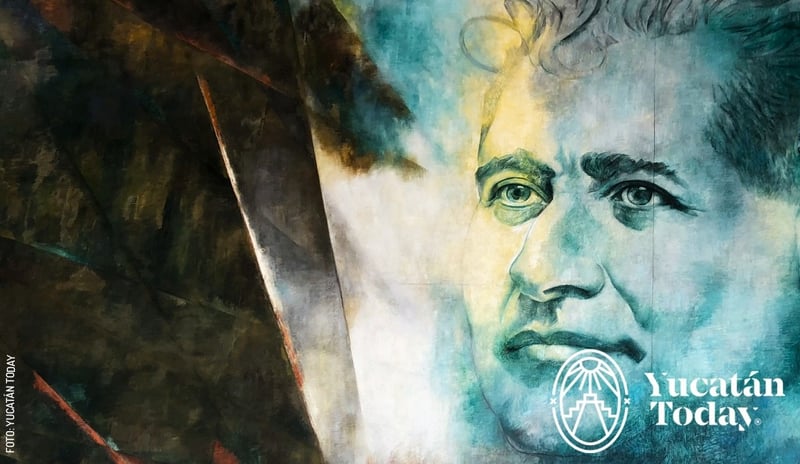
Felipe, born in 1874, was the second of 14 children, and served as governor of the state from 1922 to 1924. From a young age, he developed a deep appreciation for Maya culture. He learned the Maya language and acquired knowledge of the culture through Crisanta Chalé, an elderly woman from Kaxatah, a community near Motul. His commitment to the Maya was so strong that he became one of their main allies, even delivering his first speech in Maya from the balcony of the government palace. During his time as governor, he was devoted to protecting the agrarian rights of this community, promoting land reforms aimed at restoring land to indigenous communities.
Felipe Carrillo Puerto enacted several historic decrees for the state. Among them were the divorce law, a significant advancement in civil rights; the creation of the Autonomous University of Yucatán, then known as the National University of the Southeast, which contributed to the region's educational development; and the family patrimony law, designed to protect the resources of Yucatecan families.
If you’ve ever driven down Avenida Cupules or Avenida Itzáes in Mérida, you can thank Felipe Carrillo Puerto, as he was the one who decreed the construction of these important roads.
Elvia Carrillo Puerto, the “Red Nun” of the Mayab

In addition to promoting policies that strengthened the Maya community and expanded educational opportunities, Felipe Carrillo Puerto also worked to advance women's political rights. His sister, Elvia, joined him in this cause, advocating for gender equity and tirelessly working for women's suffrage. In a historic milestone, in 1923, Elvia became one of the first three women in the country to be elected as local deputies. Her leadership makes her a true icon of the feminist movement in México.
Elvia continued fighting for her ideals and those of her brother, even after he, along with three of their brothers, was assassinated on January 3, 1924, in Mérida's General Cemetery.
Felipe Carrillo Puerto Library Museum in Motul
You can discover these facts and many more at the museum dedicated to Felipe Carrillo Puerto, located in what was once his home. The year 2024 marks the centennial of Felipe Carrillo Puerto’s death, and during your visit, you can admire the new commemorative plaque and a sculpture of his first speech in Maya after taking office. The museum is open Monday through Friday from 9 am to 2 pm and 5 to 8 pm. On Saturdays and Sundays, it is open from 9 am to 2 pm. Admission to the museum is free.
Huevos Motuleños: A worldwide delicacy

Returning to Felipe’s legacy, one of the most iconic contributions he left us might just be huevos motuleños. You may be wondering, was Felipe a chef too? Not exactly. The story goes that one day Carrillo Puerto hosted a meeting at the Sambulá cenote (which I’ll tell you more about below). A political meeting in a cenote? Yes, a creative solution to beat the heat of the Mayab, since the cenote is inside a cavern that naturally stays cool.
On this special occasion, his companions included José Vasconcelos, the Secretary of Education at the time, and world-renowned muralist Diego Rivera. Felipe thought it would be a great idea to have their meal inside the cavern. Don Jorge Siqueff, Carrillo Puerto’s chef, without enough ingredients on hand, improvised a dish with what he had: fried tortillas with refried beans and sunny-side-up eggs, topped with tomato sauce, peas, and serrano ham. Don Jorge's creation continues to be served at the restaurants that now bear his name in Mérida (located on Calle 60 and Avenida García Lavín) and are still run by his family.
If you find yourself in this Magical Town and want to try this famous dish, head to the 20 de Noviembre market. This two-story market is well-known among both locals and Yucatecos who visit Motul on weekends. Many wait in long lines just for a taste of the delicious huevos motuleños from Doña Evelia, a beloved tradition for many Yucatecos. Another great option to try this exquisite dish in Motul is at Restaurante El Mirador, where the prices range from $80 to $110 pesos, offering an authentic and affordable culinary experience.
Cenote Sambulá

In addition to being a historical meeting point for Felipe Carrillo Puerto, the crystal-clear waters of Cenote Sambulá promise to capture your heart forever. This closed cenote, located inside a cave, is a wonderful place to swim, as the water temperature is opposite to the outside climate; if it’s hot, the water will be cold, and if it’s cool outside, the water will be warm. The cenote has an opening in the center, which means that depending on the weather and time of day, you can enjoy the sunlight. However, it’s important to note that once you pass through the rocky formations of the cave, the brightness decreases considerably, so this cenote may not be suitable for everyone.
If you’re looking for a bit more history during your trip, Cenote Sambulá also houses a small museum that narrates the most important events of Motul, accompanied by images showing how the town looked a few decades ago. The entrance fee is $80 pesos, and there is also a craft area. To get to the cenote, you can take a mototaxi from downtown Motul for just $8 pesos.
Recorre Motul en bicicleta con Bicitul

For adventure lovers, Bicitul offers an exciting way to explore Motul and its surroundings with a bike tour that lasts approximately 3 hours. In addition to visiting the places mentioned above, you’ll have the opportunity to see the Santa Cruz Pachón hacienda, one of the many henequén plantations that once thrived in the area and still preserves its original machinery. Here, you can immerse yourself in the historical context of henequén in the state and learn more about its importance in the region. You’ll also get to explore plots located near the hacienda, where you’ll find a variety of Yucatán's most common crops, such as peppermint, sweet potato, banana, tomato, lettuce, bitter orange, lime, lemons, and many more. The tour costs $450 pesos per person and includes access to the cenote, as well as a meal at the market. To book your tour, call 999 366 2054.
To wrap it up, this year has been designated as the Year of Felipe Carrillo Puerto by the government, so make sure to include his beloved Motul on your list of places to visit. If you don’t have your own transportation, public transport from Mérida to Motul is frequent and costs $25 pesos.
We hope that through this journey across time, you’ll gain a deeper appreciation for Yucatán’s rich history and feel inspired to visit this historic and traditional Magical Town.
Important dates in Motul
- July 16, Our Lady of Mount Carmel
- June 24, Saint John the Baptist
- Don Bosco (third week of January - first week of February)
Where to eat in Motul

Restaurant Doña Evelia
Calle 27 x 26-A y 28, Centro, altos del Mercado 20 de noviembre, Motul
Tel. 991 959 0061
IG: donaeveliahm
Every day, 7:30 am - 1:30 pm
Restaurant El Mirador
Calle 27 x 26-A y 28, Centro, altos del Mercado 20 de noviembre, Motul
Tel. 991 107 9710
IG: mirador.restaurante
FB: Restaurante “El Mirador” Motul
Every day, 7 am - 3 pm
Restaurant Casa de Strellita
Calle 18 x 41 y 43, Colonia San Carlos, Motul
Tel. 991 104 0430
FB: Restaurante Casa de strellita Motul
Every day, 11 am - 6 pm
Pescadería Strellita
Calle 28 x 31-A, Centro, Motul
Tel. 991 104 1380
FB: Pescaderia strellita
Every day, 8 am - 5 pm
Café Encanto
Calle 26 x 23 y 25, interior de la Plaza Oasis, Centro, Motul
Tel. 991 112 5485
IG: cafeteriaencanto21
FB: Cafetería Encanto
Thu. - Tue. 9 am - 1 pm and 7 - 11 pm
Café Ice Cool
Calle 31-A x 28 y 30, Centro, Motul
IG: icecool.cafe
Sat. - Wed. 6 - 11 pm
Pizzeria and Restaurant María Reyes
Calle 37 x 42 y 44, Colonia Rogelio Chalet, Motul
Tel. 999 133 3745
IG: mariareyes7334
FB: Pizzería María Reyes
Every day, 6 pm - 12 am
Restaurant Cocina Alexi
Calle 26 x 21 y 23, Centro, Motul,
Tel. 991 114 4017
IG: cocina.alexi.motul
FB: Cocina Alexi
Every day, 11:30 am - 4 pm
Fri. - Sun. 7 pm - 12 am
Restaurant Caty's
Calle 29 x 36 y 38, Motul
Tel. 967 363 9638
FB: Caty’s
Wed. - Mon. 8:30 am - 1 pm and 6 pm - 12 am
Restaurant Rincón Mexicano
Calle 29-A x 24 y 26, Centro, Motul
Tel. 991 113 3913
FB: El Rincón Mexicano
Tue. - Sun. 6 pm - 12 am
Where to stay in Motul
Posada Don Beto
Calle 26 x 31 y 33, Centro, Motul
Tel. 991 118 0470
www.hospedajedonbeto.com.mx
FB: Hotel Posada Don Beto Motul
Hotel El Colibrí
Calle 36 x 25 y 27, Motul
Tel. 991 105 4140
FB: Hotel Colibrí en Motul Yucatán
Hotel Santa Cruz
Carretera Motul-Cacalchén, altura Santa Cruz Pachón
Tel. 999 138 3851
FB: Hotel Santa Cruz
Hotel Boox Miss
Calle 27 x 10 y 12, Colonia San Juan
Tel. 991 111 5496
Hotel Sac Miss
Calle 25 x 34 y 34-A, Motul
Tel. 991 105 3648
Hotel Jim & Ger by Mundo’s depas
Calle 15 #127 x 18 y 20, Motul
Tel. 991 688 2979
Cel. 991 104 3100
FB: Hotel Jim & Ger by Mundo’s depas
Alojamiento Pérez
Calle 25 x 26 y 28, Centro, Motul
Tel. 999 328 3062
Mundo’s Depas
San Roque: Calle 43 x 48 y 50, Colonia San Roque
Centro: Calle 25 x 32 y 34, Centro
Londres: Calle 15 x 16-B, Colonia Londres
Tel. 991 100 0587
FB: The Mundo's depas
Coco Resort & Villas
Tel. 999 505 7903
Cel. 999 364 9281
www.cocoresorts.mx
FB: Coco Resort & Villas
Hotel and Restaurant María José
Calle 26 x 25 y 27, Centro
Tel. 991 915 0828
FB: Hotel y Restaurante María José
Distances from and to Motul
- Distance between Motul and Telchac Puerto: 28 km or 17 mi (28 minutes by car)
- Distance between Motul and Aké: 29 km or 18 mi (45 minutes by car)
- Distance between Motul and Izamal: 37 km or 23 mi (46 minutes by car)
- Distance between Motul and Mérida Cathedral: 47 km or 29 mi (55 minutes by car)
- Distance between Motul and Acanceh: 52 km or 32 mi (1 hour by car)
- Distance between Motul and Homún: 69 km or 43 mi (1 hour 20 minutes by car)
- Distance between Motul and Espita: 124 km or 77 mi (1 hour 28 minutes by car)
- Distance between Motul and Chichén Itzá: 120 km or 74 mi (1 hour 45 minutes via the toll road, 1 hour 55 minutes via the free road through Holcá and Yokdzonot)
- Distance between Motul and Uxmal: 125 km or 78 mi (1 hour 40 minutes by car)
- Distance between Motul and Valladolid: 158 km or 98 mi (2 hours 3 minutes via the toll road, 175 km (2 hours 12 minutes) via Tizimín
Destinations in the neighboring state of Quintana Roo
- Distance between Motul and Tulum: 258 km or 160 mi (3 hours 25 minutes by car) via the toll road to Valladolid, 275 km (3 hours 35 minutes by car) via Tizimín
- Distance between Motul and Cancún: 304 km or 189 mi (3 hours 50 minutes by car) via the toll road from Kantunil, 323 km or 200 mi (3 hours 55 minutes by car) via Tizimín and then the toll road
- Distance between Motul and Playa del Carmen: 287 km or 178 mi via the toll road from Kantunil (3 hours 35 minutes by car), 304 km or 189 mi (3 hours 40 minutes by car) via Tizimín and then the toll road
Note: If you use navigation apps (like Google Maps or Waze) to plan your route, they will likely suggest taking toll roads as they are faster. However, consider that the time difference between the toll road and free roads may only be a few minutes. Taking the free roads will take you through various towns along more scenic routes, but on narrower roads with lower speed limits, making it harder to overtake slower vehicles such as cargo trucks and other slow-moving vehicles.



